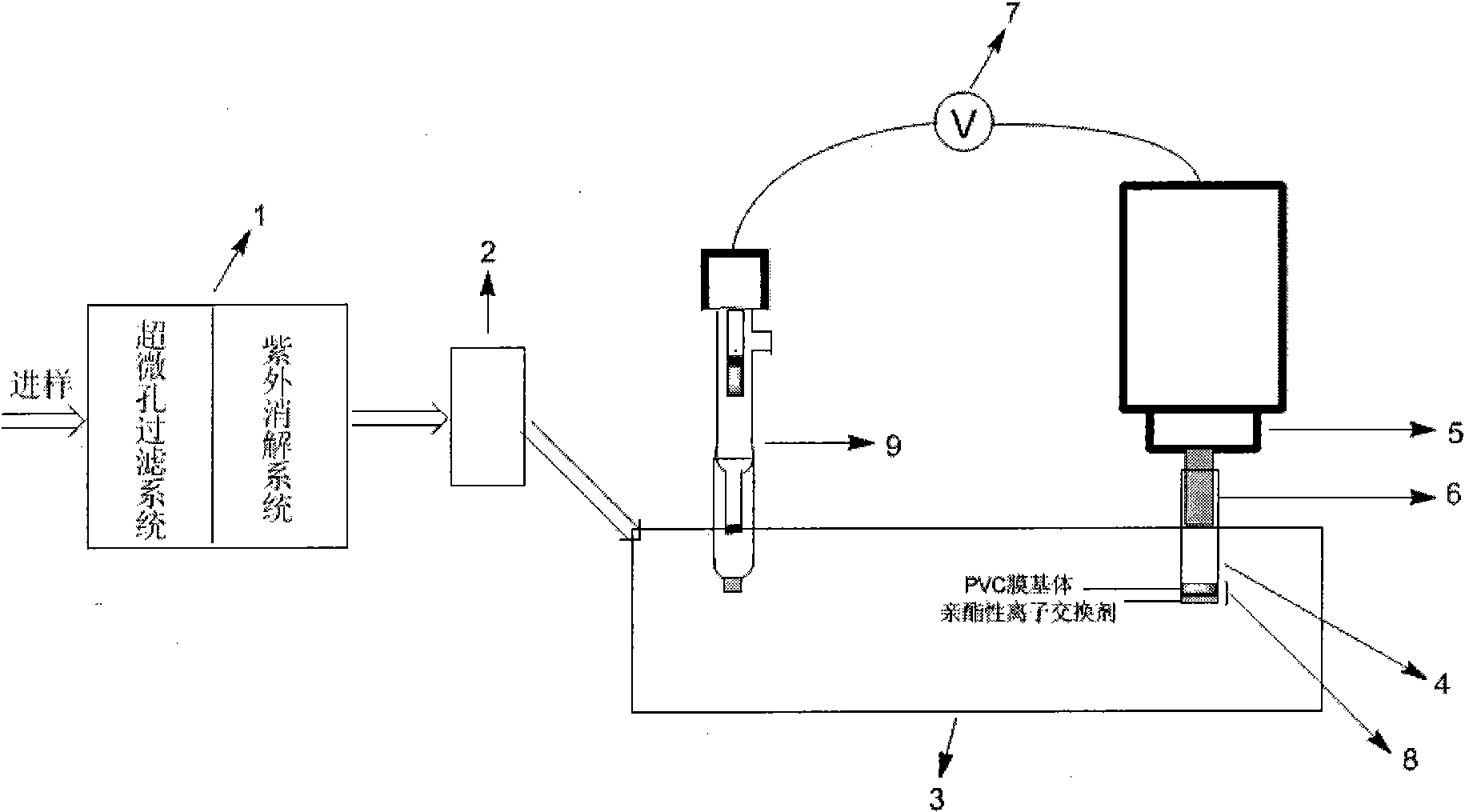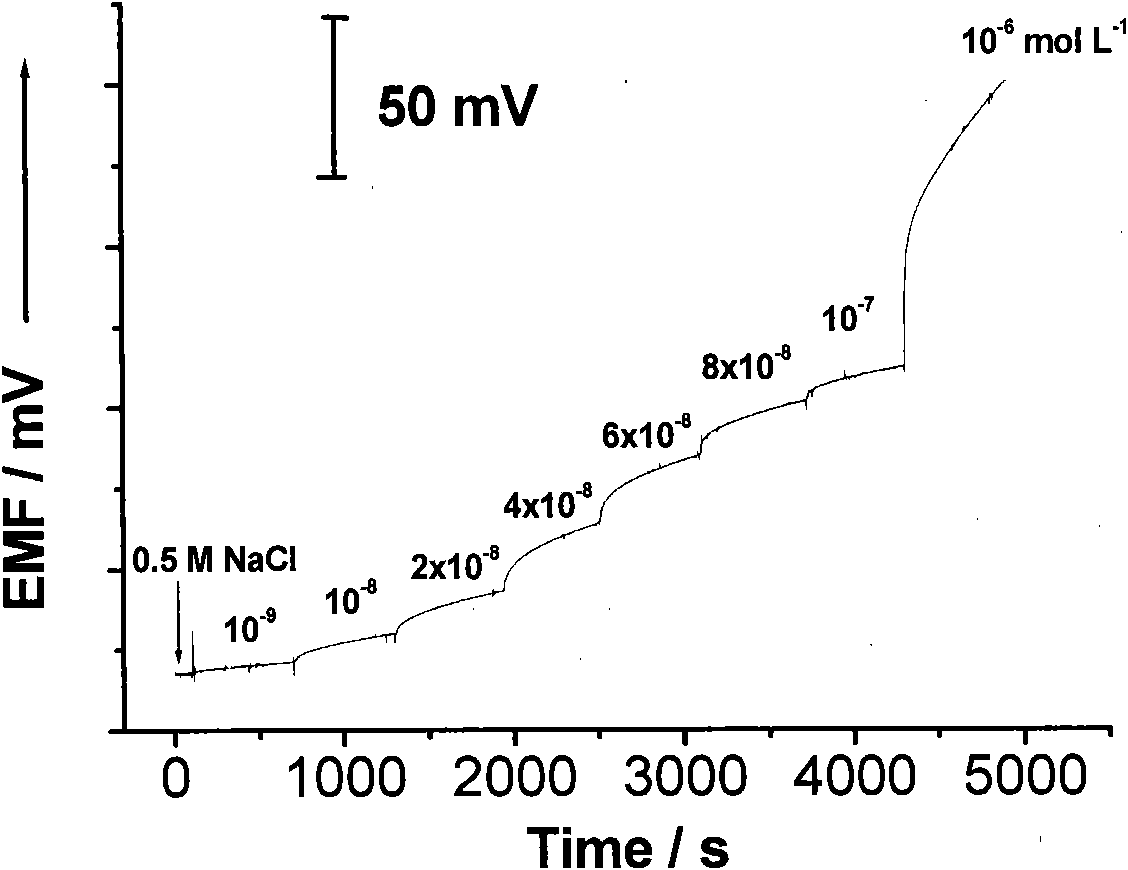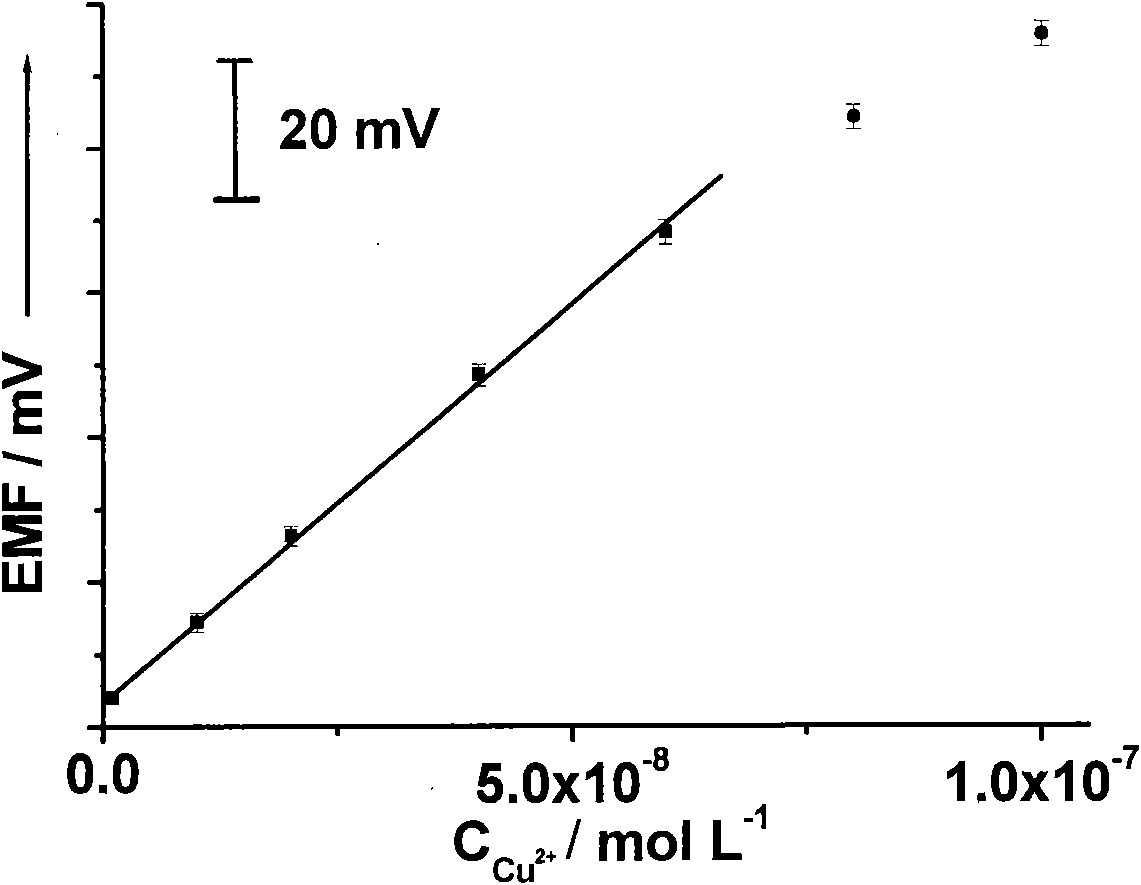Sensor based on asymmetric polymer film as well as detection method and applications thereof
A polymer film, asymmetric technology, applied in the direction of instruments, measuring devices, scientific instruments, etc., can solve the problems of matrix effect interference with heavy metal content, limit the detection limit of electrodes, etc., to shorten the detection time, reduce the detection limit, Reduce the effect of spreading
- Summary
- Abstract
- Description
- Claims
- Application Information
AI Technical Summary
Problems solved by technology
Method used
Image
Examples
Embodiment 1
[0049] Based on the sensor of asymmetric polymer film, the PXSJ-216L ion meter 7 is respectively connected with the double-junction saturated calomel reference electrode 9 as the negative electrode and the working electrode 4 as the positive electrode through wires, and the working electrode 4 and the reference electrode 9 are inserted In the sample cell 3 to be detected, the working electrode 4 is composed of an ion-selective electrode and a rotating disk electrode 5 inserted therein. The ion-selective electrode is a polyvinyl chloride tube 6 with an asymmetric polymer film 8 adhered to the bottom, and is to be detected The sampling port of the sample pool 3 is connected with a peristaltic pump 2 and a device 1 composed of an ultraviolet digestion device and a microporous filter device in sequence. (see figure 1 ).
[0050] The ion-selective electrode is a polyvinyl chloride tube, and a layer of asymmetric polymer film is adhered to the bottom of the polyvinyl chloride tube....
Embodiment 2
[0061] Take the present invention to detect the content of copper ions in seawater collected from Yangma Island as an example. Its determination steps are as follows:
[0062] a. Seawater sample pretreatment: Take 10mL seawater sample and filter it through a 0.45μm microporous membrane, then pump it into the ultraviolet digestion device (ultraviolet lamp power 200W) at a flow rate of 1mL / min, and the outlet of the digestion device is connected to the sample collection pool.
[0063] b. Preparation of copper ion selective electrode:
[0064] 1) Preparation of asymmetric polymer film base: 125.3mg high molecular weight PVC particles, 50.4mg o-nitrophenyloctyl ether, 1.8mg cadmium ionophore and 1.8mg tetrakis(dodecyl)-tetrakis(4- Chlorophenyl)ammonium borate mixed, transferred to 2.5ml tetrahydrofuran solution, stirred for 2h to disperse evenly, and then naturally volatilized at room temperature for 12h to obtain a polymer film base with a thickness of about 100μm.
[0065] 2) ...
Embodiment 3
[0073] Determination of HgCl in solution by the present invention 4 2- content as an example. Its determination steps are as follows:
[0074] a.HgCl 4 2- Preparation of anion selective electrode:
[0075] 1) Preparation of asymmetric polymer film base: 125.3mg high molecular weight PVC particles, 50.4mg o-nitrophenyloctyl ether, 1.8mg lead ionophore carrier and 1.8mg tetrakis(dodecyl)-tetrakis(4 -Chlorophenyl) ammonium borate mixed, transferred to 2.5ml tetrahydrofuran solution, stirred for 2h to disperse evenly, and then naturally volatilized at room temperature for 12h to obtain a polymer film base with a thickness of about 100μm.
[0076] 2) Lipophilic ion-exchange layer: 0.734 mg of tris(dodecyl)ammonium chloride was dissolved in 1 mL of tetrahydrofuran.
[0077] 3) Use a hole punch to cut the polymer film base into uniform circular slices with a diameter of 0.6 cm, and adhere the polymer film base to the bottom of the polytetrafluoroethylene tube with a mixture of ...
PUM
| Property | Measurement | Unit |
|---|---|---|
| pore size | aaaaa | aaaaa |
| thickness | aaaaa | aaaaa |
Abstract
Description
Claims
Application Information
 Login to View More
Login to View More - R&D
- Intellectual Property
- Life Sciences
- Materials
- Tech Scout
- Unparalleled Data Quality
- Higher Quality Content
- 60% Fewer Hallucinations
Browse by: Latest US Patents, China's latest patents, Technical Efficacy Thesaurus, Application Domain, Technology Topic, Popular Technical Reports.
© 2025 PatSnap. All rights reserved.Legal|Privacy policy|Modern Slavery Act Transparency Statement|Sitemap|About US| Contact US: help@patsnap.com



